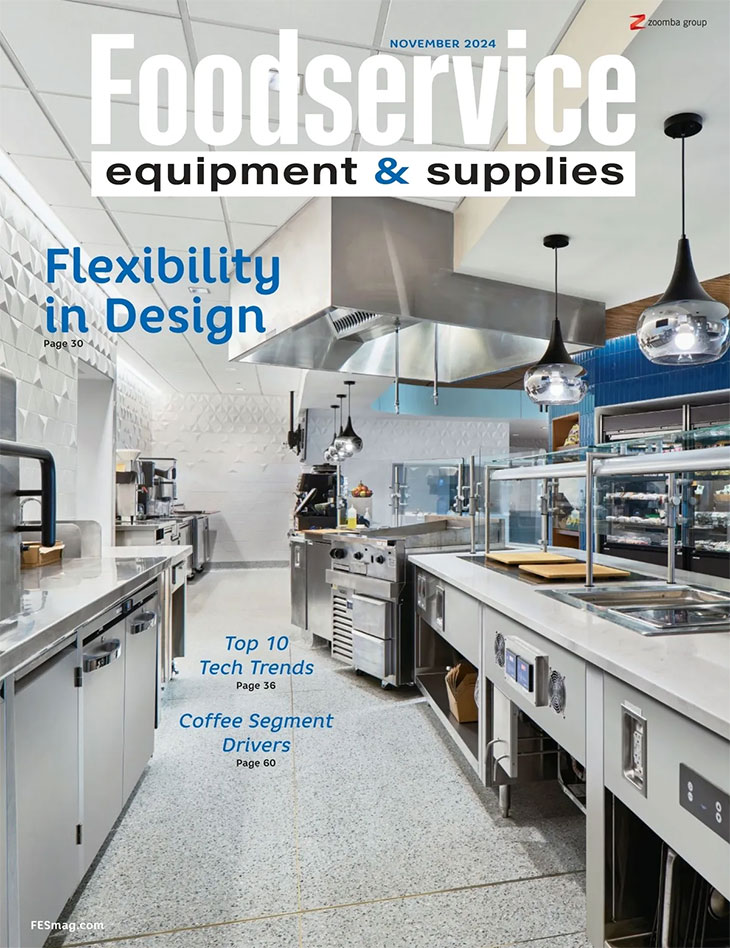Fermented foods are on the hot list for chefs today. Fermented foods first made waves in the foodservice industry back in 2018, with use up 149% in restaurants that year, according to Statistica. Fermentation can help stem product waste by providing a way to preserve unused ingredients.
Concept Close-Up: Emmer & Rye
Emmer & Rye takes farm-to-table principles to a new level with a whole animal butchery on-site and an in-house fermentation program that preserves seasonal flavors for the off-season. When Alfred Francese joined the Austin, Texas, restaurant as sous chef and larder master four years ago, he brought his own ideas on how to capitalize on the restaurant’s use of local ingredients, which eventually led to the transformation of the restaurant’s larder.
 Loquat and peach umeboshiQ: Why was the fermentation program created?
Loquat and peach umeboshiQ: Why was the fermentation program created?
A: As the restaurant grew more popular, we were contending with a significantly larger amount of food waste, while our need for more seasonal ingredients also increased. I had a great interest in fermentation, and that was the reason I came here.
Q: How extensive is your fermentation program?
A: Our program ranges from lactic acid bacteria production to water brine to fermented vegetables. We also use a fermenting technique from spent grains and make vinegar in-house for fermenting. In addition, we produce kombucha on-site for staff and customers and make it into sauces. We also use lactic fermentation with dairy products, which consumes milk sugars to make crème fraîche, cultured butter and many different cheeses. Our entire bread program is based around fermentation with a sourdough starter. We make amino sauce out of bread scraps, which is nontraditional, and create miso out of legumes, grains and shoyu.
Q: What equipment is used for fermenting?
A: We have a lot of plastic and glass containers with weights and internal pieces to keep ingredients submerged in the liquid. We grow koji in hotel pans. We also have an incubation chamber fitted with heat and humidity sensors and heaters.
Q: What are the benefits of having an in-house fermentation program?
A: First, it helps with waste utilization. Instead of tossing 5 gallons of egg whites a week in the trash, we utilize the protein to make egg white amino, which tastes like soy sauce. This is used to create sauces and ice cream. Second, this fermenting program preserves seasonal ingredients. Third, fermenting expands the flavor profiles of our dishes with the different marinades and sauces we can produce. Almost every menu item has something fermented at all times. Our staples are amino sauces, shoyu and miso, which are used as seasoning or salting agents. For example, right now, we have a daikon radish that is lactically fermented.
Common Fermented Food
- Yogurt
- Cheese
- Sauerkraut
- Soy products
- Sourdough bread
- Beer
- Chocolate
A New Definition
In September 2019, 13 interdisciplinary scientists from the fields of microbiology, food science and technology, family medicine, ecology, immunology and microbial genetics created the first international consensus definition of fermented foods. Their paper, published in “Nature Reviews Gastroenterology & Hepatology,” defines fermented foods as those “made through desired microbial growth and enzymatic conversions of food components.”




